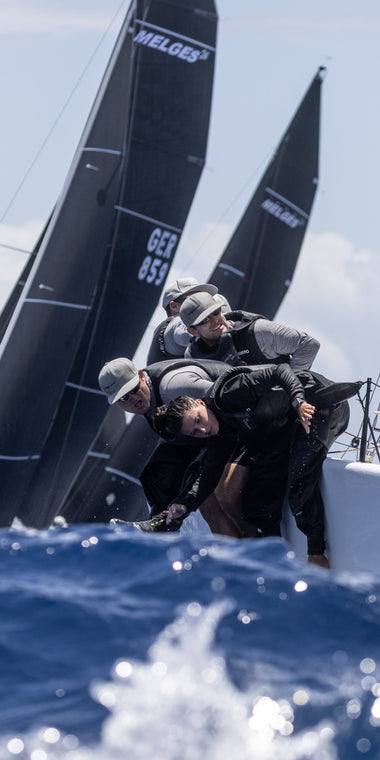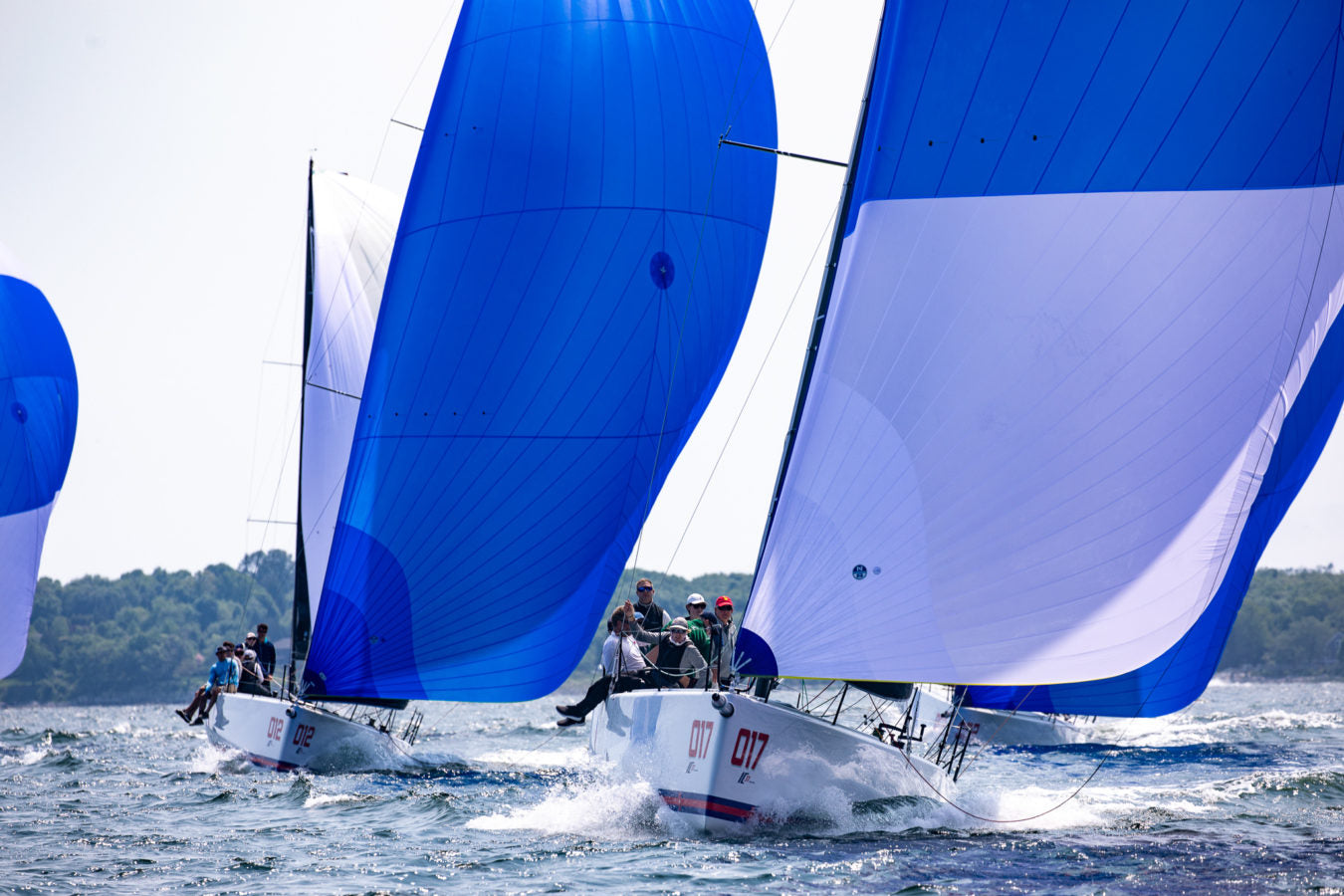MELGES IC37 TIPS: VOLUME THREE
MELGES IC37 TIPS: VOLUME THREE
Expert Notes On IC37 Sails

The North Sails IC37 class experts sailed the IC37 for most of the 2018 season and are now coaching the fleet during the first three events of 2019. In Volume Three of our class tips, North Sails designer Mike Marshall provides answers to common problems we’ve seen on sail setup and offers his insight to some of the sail decisions that were made during the charter fleet’s inaugural season.
Batten Box Stud Installation
The batten boxes are designed to have the studs screwed as far in as possible while still being only hand tight. The end of the stud attached to the slide might look like it is farther into the sail than the other bushings on the luff, but that is because the batten slides stick out of the mast farther than the intermediate slides.
This is important: don’t over-tighten the studs. They should be screwed in as far as possible by hand and then backed out half a turn. This allows the box to rotate on the stud and line up with the track when the main is hoisted. If the stud is in too far and the box can’t rotate to vertical easily, you risk bending the stud and breaking the batten box.

Jib Buckles And Spinnaker Damage
The jib buckles have been specifically placed on the port side of the jib to minimize interference with the spinnaker. The spinnaker is most likely to come in contact with the luff side of the jib during a weather strip on port tack. The spinnaker will have minimal prolonged dragging contact with the jib luff during all other takedowns.
The most common way to rip the kite is if the spinnaker sheet doesn’t get eased enough through a jibe. When the boat turns down, the crew must aggressively ease the spinnaker sheet to get the sail away from the boat. If this doesn’t happen, the spinnaker will fold over itself, the old sheet, and the headstay, causing a pinch point where the kite can tear. We have witnessed this firsthand in a jibe where the jib was down and in the pulpit; the sheet wasn’t eased enough, and the spinnaker folded in on itself and tore about 3 meters above the pulpit.
Spinnaker Zipper
It was decided early on that the spinnakers would not have tack zippers. There were two reasons for this. First, with very close racing, sending someone down below is potentially around 10% of your crew weight off the rail. This could be very detrimental to a close cross at the next windward mark. Second, in the spirit of reimagining fun racing, sending someone down below to be banged around while repacking the kite didn’t seem like the right decision. All of this led to the conclusion that the zippers would only be used at the first windward mark of each race. At the second one, the crew will have to learn how to keep the kite in the boat without zippers anyway. Thus, the hassle of zippers was avoided and they were removed. Incidentally, this also prevents a lot of kite-tearing potential from zippers not being broken/opened properly or cars not being removed.
Gybulators
IC37 spinnakers do not come with gybulators for two reasons. In the initial trials of the boat with a shorter pole, we tested outside jibes and found them slower than inside jibes; the foot of the kite is so long that it is an incredibly large amount of sheet to pull in. Since inside jibes seemed to be easier, the pole length was increased to accommodate them. Second, with the pulpit setup and jib configuration, the stiff gybulator made it very difficult to get the tack of the sail past the forestay. At any angle other than vertical, the sail would be stuck on the leeward side of the jib behind the pulpit. If you want to do outside jibes, tape a batten to the bottom of the front of the pole to act as a bowsprit.
Visit and bookmark the IC37 Class page, your one stop for IC37 resources from North Sails.





























